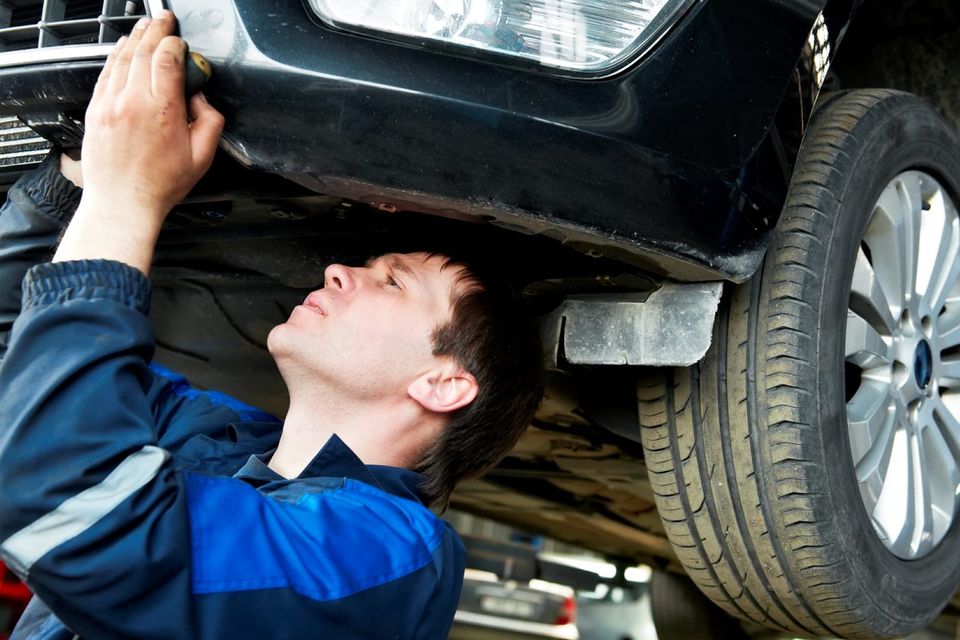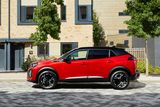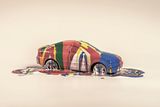Fail to prepare, prepare to fail ... some simple steps to get you through NCT
Over half of all cars tested don't pass, with most defects being easy to avoid, like faulty light bulbs or worn tyres
Testing time: The inspection is thorough and every aspect of the vehicle is examined
There were just under 1.5 million NCT tests carried out last year and more than half of the cars tested failed first time. However, those that fail usually have an issue that could be easily fixed, by either the driver or a mechanic, before the day of the NCT.
Broken headlights, missing bulbs and tyres in a poor condition are just three of the reasons why cars fail.
So how can you prepare your car before a NCT?
Just a few simply checks could save you time and money and if you do discover that you need to bring it to a mechanic, you will have time to shop around, rather than being under pressure due to a looming retest date.
Clean your Car: Cleaning your car inside and out will not only give the impression of a well cared-for and maintained car, but also, if your car is really dirty, then the tester can actually refuse to carry out the test.
A National Car Test inspector refused to carry out a car test because there were dog hairs in the vehicle. Also, be sure to empty the boot, as this needs to be accessible, and pay particular attention to your lights, mirrors and registrations plate, which should be clear and undamaged.
Lights: Nearly a fifth of all failures are due to lights. When your car is parked, walk around it and check all of the lights, the headlight and low beam, indicators, parking lights, number plate lights and brake lights.
The rear fog lamp, where fitted, will be checked to ensure that when in use it provides a red light which is clearly visible and the reverse provides a white light which is clearly visible.
Check that the lens and/or casings are not cracked or damaged and make sure the hazards are working too.
Either use a mirror placed behind the car or get someone to stand behind while you operate.
Inside the car, check all the warning lights on the dash, including the indicator for airbags, electronic stability control (ESC) systems and electronic braking systems (EBS)/anti-lock brake system (ABS): your car will fail if a malfunction indicator is not working or indicates a defect in the system.
Water and Fluids: Top up all the fluids and make sure you have enough fuel. Fluids include engine oil, engine coolant, power steering and brake fluid windscreen wash.
Most of these are clearly labelled under the bonnet and easy to top up, but if you are unsure, check the manual.
Tyres: Make sure all tyres are inflated to the correct pressure. You can do this at most service stations and you can find the correct pressure in your manual. There also needs to be at least 1.6mm of tread across three-quarters of the tyre.
Use a torch to ensure there are no cuts, lumps of bulges on the tyre. Otherwise, not alone will you fail, but you will have less grip and risk a blowout.
Remove hubcaps so that the wheel nuts are visible. Also an 'E' or 'e' mark indicates that the tyre is certified to comply with EU regulations and must be present on your tyres.
Windscreen and Wipers:
Make sure your wiper blades are working and are not damaged or worn, including the rear wiper. The windscreen should be free from large chips or cracks.
Handbrake: Although you are only going to be able to check the operation and not efficiency, just make sure the handbrake holds the car on a hill.
Also, pull it up to listen to the ratchet engaging - between six and eight clicks are enough, any more and your cable may be stretched, reducing efficiency.
SEATBELTS: All seatbelts must be in good condition and working, so ensure you can easily access them and that the belts and their clips are visible.
Ensure all the clips properly engage and that the belt is not frayed or cut, as that too could result in a failure. Also, if you have child seats fitted, then the NCT is required to check that they are correctly attached.
Number plates: These must be securely fastened and clearly legible. No letters or numbers should be obscured and they should be the correct size and spacing.
Documents and Fee: Bring all paperwork relating to your car, such as the vehicle registration book, registration certificate, licensing certificate and also your personal identification. If you don't have the documentation to check, you may find you will be turned away.
Remember also the fee. The test costs €55 and a re-test where test equipment must be used to check the vehicle will cost €28. It is free when only a visual inspection is required.
Don't leave the test until the last minute, you can book a test up to 90 days in advance, so do yourself a favour and allow plenty of time to make any necessary repairs to your car.
If you are unclear about any aspect of the test procedure, you can download the NCT manual from the website and this clearly details every test. Finally, if you are dissatisfied with the test result, you may appeal it through the NCTs appeal process.
- GH
Join the Irish Independent WhatsApp channel
Stay up to date with all the latest news















